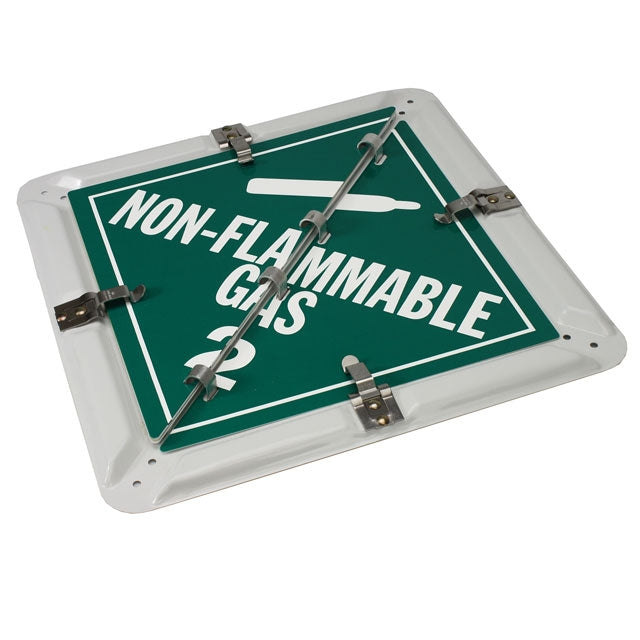
8 Legends In Our Placard Set: What Do They Mean?
Our placard set is one of our best-selling items in our vehicle and driver supplies, due in part to its versatility- eight different legends are available with the quick switch of the plates. The hazardous materials placard's legends cover a wide variety of labels for whatever hazardous materials you find yourself hauling. These meet the all-important requirements from 49 CFR Part 172.519 of all hazmat codes.
So one question really makes sense: what are the eight legends in the placard set and what does it take to use each?
Dangerous
The “Dangerous” placard needs to be used if the shipment in question has non-bulk packages of two or more of these other placards, meaning multiple signs are required. This could be if a chemical was flammable and explosive, for example, or chemical and combustible, etc.
Corrosive (Class 8)
To be considered corrosive, the material can be solid or liquid, but its main trait is that if a person comes into contact with it, the “full destruction” of human skin will occur within a certain amount of time after contact. Also any liquid that can corrode steel or aluminum is also considered corrosive in nature.
Flammable Liquid (Class 3)
A liquid is considered Class 3 flammable when it has a flash point of not more than 60.5°C (141°F), or also for any liquid that has a flash point above 37.8°C (100°F) that is intentionally heated, and is transported at or above flash point in bulk packaging.
Flammable Gas (Class 2)
The Class 2 flammable gas legend is for any gas that is compressed and stored for transportation, and is also flammable when put into contact with an open flame.
Non-Flammable Gas (Class 2)
To use the non-flammable gas legend you’re looking at any gas that is compressed for transportation but is not naturally flammable, according to the HAZMAT Class 2 gas requirements in the United States.
Inhalation Hazard (Class 6)
This designation is for any poisonous material other than a gas that is known to be toxic and possibly fatal to humans. Toxic gas gets a designation of poisonous gas, so is separate from this one.
Oxidizer (Class 5.1)
You can use the oxidizer legend when hauling any chemical that readily yields oxygen in reactions, which is a fancy way of saying it can cause combustion or enhance any combustion taking place. 
Poison (Class 6)
Any material being hauled that is known to be toxic to people and presents a health hazard during transportation (other than gas) is classified as a poison. You can find more information online at the Federal Motor Carrier Safety Administration (FMCSA) page: Hazmat regulations.


